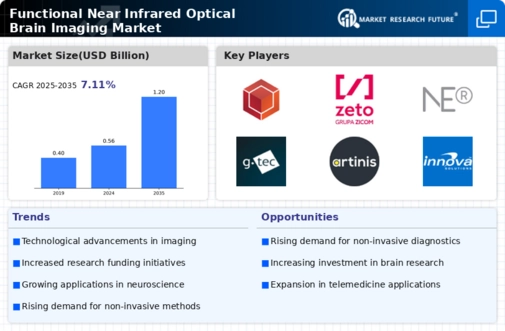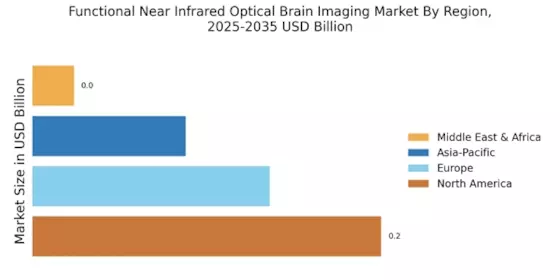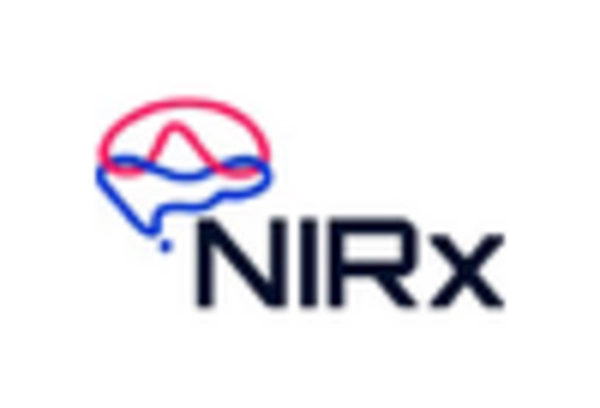Expanding Research Applications
The Functional Near Infrared Optical Brain Imaging Market is witnessing an expansion in research applications across various fields, including neuroscience, psychology, and cognitive science. Researchers are increasingly utilizing this imaging technique to study brain functions, cognitive processes, and neurological disorders. The ability to monitor brain activity in real-time allows for a deeper understanding of complex brain mechanisms. As of 2025, the market is anticipated to benefit from increased funding and interest in brain research, with a projected growth rate of around 18%. This trend indicates a growing recognition of the importance of brain imaging in advancing scientific knowledge and developing new therapeutic strategies.
Government Initiatives and Funding
Government initiatives and funding play a pivotal role in the growth of the Functional Near Infrared Optical Brain Imaging Market. Various governments are recognizing the importance of brain health and are investing in research and development of advanced imaging technologies. Grants and funding programs aimed at supporting neuroscience research are becoming more prevalent, facilitating the development of innovative imaging solutions. This financial support is likely to accelerate advancements in functional near infrared optical imaging, making it more accessible to researchers and clinicians. As a result, the market is expected to experience a growth trajectory of around 19% in the coming years, driven by these supportive policies and funding opportunities.
Rising Incidence of Neurological Disorders
The rising incidence of neurological disorders is a critical driver for the Functional Near Infrared Optical Brain Imaging Market. Conditions such as Alzheimer's disease, Parkinson's disease, and stroke are becoming more prevalent, necessitating advanced diagnostic tools. Functional near infrared optical imaging provides a valuable method for early detection and monitoring of these disorders, enabling timely intervention. As healthcare systems strive to address the growing burden of neurological diseases, the demand for effective imaging solutions is likely to increase. Projections suggest that the market could see a growth rate of approximately 22% as healthcare providers seek innovative ways to improve patient outcomes in neurology.
Increasing Demand for Non-Invasive Procedures
The demand for non-invasive medical procedures is rising, significantly impacting the Functional Near Infrared Optical Brain Imaging Market. Patients and healthcare providers are increasingly favoring techniques that minimize risk and discomfort. Functional near infrared optical imaging offers a non-invasive alternative to traditional imaging methods, such as MRI and CT scans, which often require contrast agents or sedation. This shift towards non-invasive options is likely to enhance patient compliance and satisfaction, further driving market growth. As healthcare systems continue to prioritize patient-centered care, the appeal of non-invasive imaging solutions is expected to grow, potentially leading to a market expansion of over 20% in the coming years.
Technological Advancements in Imaging Techniques
The Functional Near Infrared Optical Brain Imaging Market is experiencing a surge in technological advancements that enhance imaging techniques. Innovations in sensor technology and data processing algorithms are improving the accuracy and resolution of brain imaging. For instance, the integration of machine learning and artificial intelligence is enabling more precise interpretation of brain activity patterns. This evolution is likely to attract more researchers and clinicians, thereby expanding the market. As of 2025, the market is projected to grow at a compound annual growth rate of approximately 15%, driven by these advancements. The ability to visualize brain functions in real-time is becoming increasingly valuable in both clinical and research settings, suggesting a robust future for this sector.


















Leave a Comment